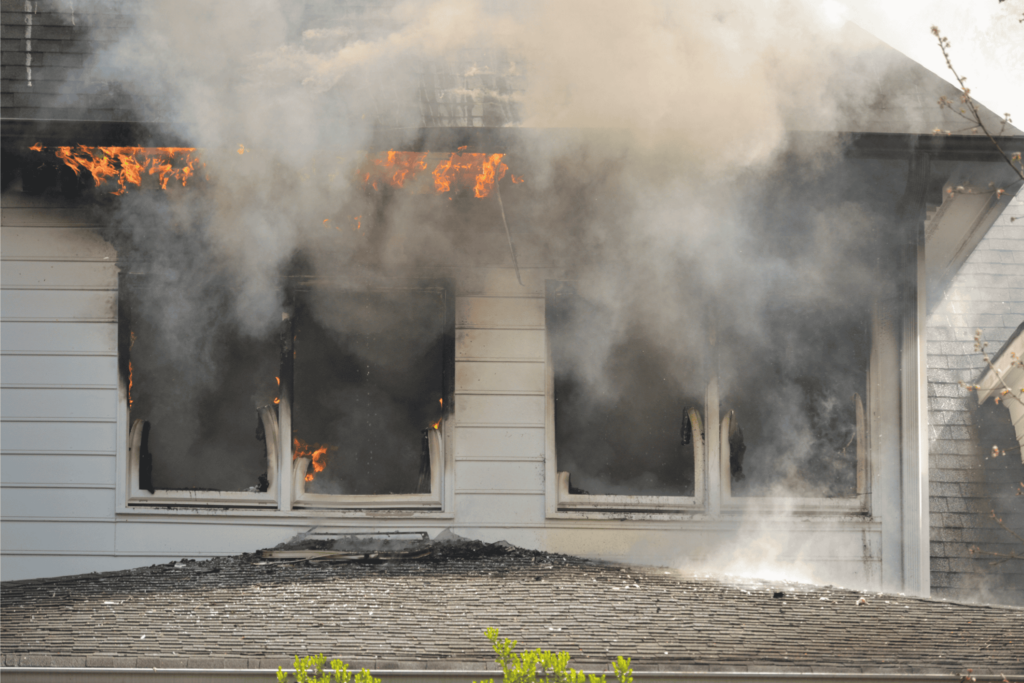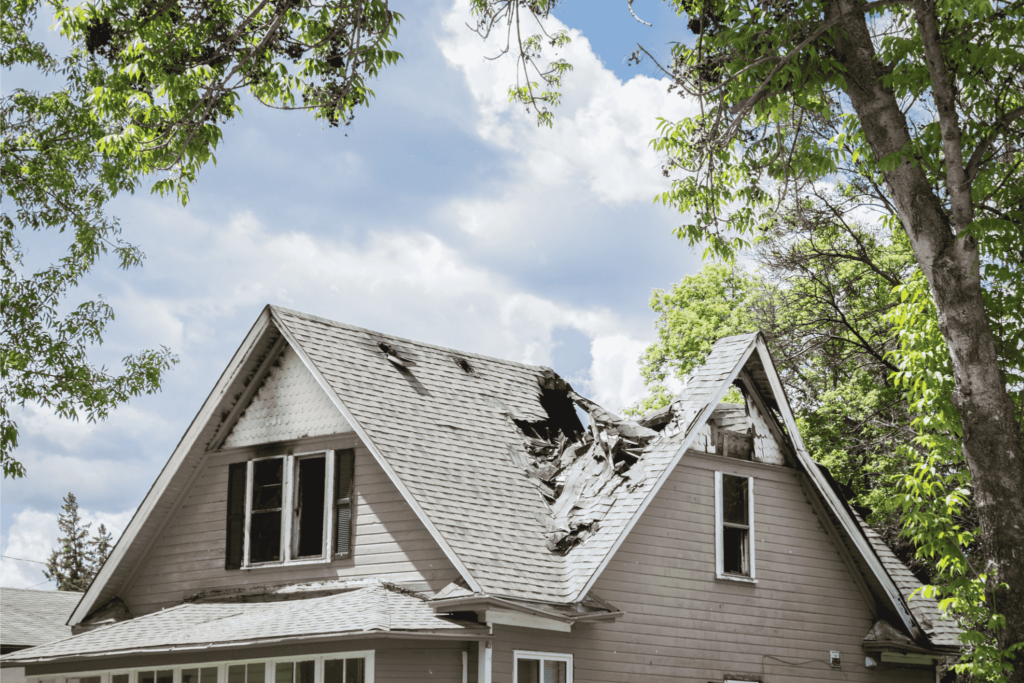Short answer:
- Ventilate Immediately: Open windows and doors to get fresh air moving. Set up fans to direct smoke-laden air outside.
- Replace HVAC Filters: Swap out all air filters and avoid running your HVAC system until ducts are inspected or cleaned.
- Clean Surfaces Thoroughly: Use a smoke-specific cleaner (like one with tri-sodium phosphate) on walls, ceilings, and hard surfaces. Soft materials like upholstery and carpet need special professional cleaning treatments and care.
- Use Air Purifiers: Run air purifiers with HEPA filters to capture smoke particles from the air.
- Deodorize with the Right Products: Odor neutralizers (not just air fresheners) can help, but avoid anything that just masks the smell.
- Call a Professional: Smoke odor can linger deep in walls, insulation, and ducts,etc. For complete removal, professional restoration services like RestoPros.
When fire damages a property, it leaves behind more than visible destruction. Smoke damage, while less apparent, presents a complex restoration challenge that requires technical understanding to address effectively. Smoke particles and odor molecules, microscopic in nature, possess remarkable penetrative capabilities. These particles infiltrate porous materials, becoming deeply embedded in structural elements, furniture, and textiles.
The composition and behavior of smoke residue vary significantly based on the fire’s characteristics. Low-oxygen, slow-burning fires produce wet smoke—a dense, highly viscous residue with strong adhesive properties. In contrast, high-temperature, fast-burning fires generate dry smoke odor, characterized by a fine, powdery deposit. When synthetic materials combust, they create a particularly problematic thirdhand smoke residue, forming a thin but tenacious film that chemically bonds with surfaces. This explains why conventional air fresheners prove ineffective—they merely mask odors without addressing the molecularly bonded smoke particles.
Protecting Your Health Comes First
Post-fire smoke contamination poses significant health risks through various exposure pathways. Residual smoke molecules contain complex mixtures of volatile organic compounds (VOCs), carbonaceous particulate matter, and potentially carcinogenic substances. These contaminants can cause immediate respiratory irritation, eye inflammation, and dermatological reactions. Prolonged exposure may lead to chronic respiratory conditions and other systemic health effects.
Effective air quality management is crucial during remediation. While ventilation is necessary, it must be strategically implemented to prevent cross-contamination. Professional assessment of HVAC systems is typically required, as smoke odor can infiltrate and become retained in ductwork, creating a reservoir for ongoing contamination even after surface cleaning is complete.
Quick-Action Smoke Removal: First 24 Hours Are Critical
When smoke damage strikes your home, the initial 24-hour period is absolutely crucial for preventing lingering smoke smell and persistent smoke odor. Taking immediate, decisive action can significantly reduce the long-term effects of smoke residue and save your belongings from irreversible harm.
Cleaning Smoke Damage by Surface Type
Removing smoke odor after a fire requires a methodical approach tailored to each surface type in your home. Understanding the proper cleaning techniques for different materials is crucial for effective smoke smell removal.
Soft Surfaces
For upholstered furniture, fabrics, and carpets, begin with a thorough HEPA filter vacuum cleaning to remove loose smoke particles. Curtains and drapes often retain a significant smoke smell and should ideally be removed for professional dry cleaning. If the items are washable, strictly follow the care label instructions.
Hard Surfaces
When cleaning interior walls and ceilings, work from the bottom up to prevent streaking. Use the TSP solution or a commercial smoke odor eliminator, paying special attention to corners and areas above heat sources where smoke molecules tend to concentrate. For textured surfaces, use a soft brush to ensure the cleaning solution reaches all crevices. For wood furniture, begin with a dry-cleaning sponge to remove initial residue, then clean with a wood-specific cleaner and apply a protective finish to seal the surface. For hardwood floors, use cleaners specifically designed for wood and avoid excessive moisture, always working in the direction of the wood grain.
HVAC System
Your home’s HVAC system plays a crucial role in smoke odor removal. Replace all air filters immediately after smoke exposure and clean vents and registers thoroughly with the TSP solution. Due to the complexity of duct systems, professional duct cleaning is likely necessary for complete smoke odor removal. Throughout the entire cleaning process, maintain proper ventilation by opening windows and using air purifiers to circulate fresh air.
Professional Solutions and Equipment
While surface-level cleaning helps, true odor removal requires industrial-grade solutions. RestoPros brings advanced technology and proven protocols to fully eliminate smoke damage and restore your home.
- HEPA Air Filtration
High-efficiency particulate air (HEPA) filters capture particles as small as 0.3 microns. We deploy HEPA-equipped air scrubbers throughout the home to clean the air continuously and reduce airborne contaminants.
- Thermal Fogging
This method uses heated deodorizing agents to create a vapor that behaves like smoke—penetrating deep into walls, upholstery, and hidden cavities. The vapor neutralizes odors at the molecular level.
- Ozone & Hydroxyl Generators
We use ozone treatments or hydroxyl generators to oxidize odor molecules. These solutions are especially effective for treating large spaces and items that can’t be removed from the home.
- Ductwork & HVAC Remediation
Smoke often infiltrates the HVAC system, circulating odor throughout the home. RestoPros professionals inspect and deep-clean all air ducts, vents, and registers, then replace filters and deodorize the system to prevent recontamination.
- Wall Cavity & Structural Decontamination
Smoke seeps into wall voids, insulation, attics, and crawlspaces. Our team uses specialized cleaning agents and odor-neutralizing sprays to treat these hard-to-reach areas, ensuring complete deodorization.
- Contents Cleaning
We carefully assess and salvage affected belongings—furniture, electronics, clothing, and documents—using ultrasonic cleaners, ozone chambers, or professional dry cleaning as needed.
Don’t Waste Time on Temporary Fixes
DIY efforts like airing out your home, running fans, or spraying air fresheners may offer short-term relief—but they rarely address the real problem. Most homeowners who try to manage smoke odor themselves find the smell returning within days or weeks.
Professional smoke damage cleanup is a necessary investment—not just in your home’s cleanliness, but in your family’s health and safety.
Take Action Today with RestoPros
When it comes to effectively eliminating smoke odor from your home, professional expertise makes all the difference. While DIY methods can help with immediate concerns, complete smoke odor removal requires specialized knowledge and equipment that only professional services can provide.
Contact RestoPros Now
Don’t let lingering smoke smell continue to affect your home and health. RestoPros offers comprehensive smoke damage restoration services with guaranteed results. Our IICRC-certified technicians are available 24/7 for emergency response, and we begin with a free, detailed consultation to assess your specific situation. The restoration process is streamlined to work efficiently with your insurance company, minimizing both stress and disruption to your daily life.
Take the first step toward restoring your home’s comfort and safety – contact RestoPros today. Our team is ready to provide the expert odor removal your property needs, backed by years of experience and a commitment to complete customer satisfaction. Call our emergency response line or visit our website to start your journey to an odor-free home.


